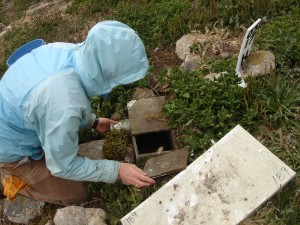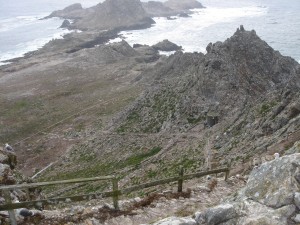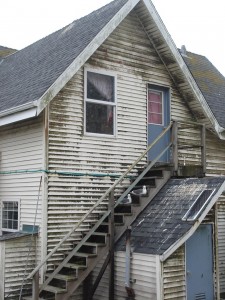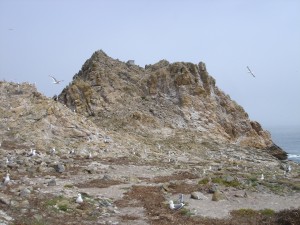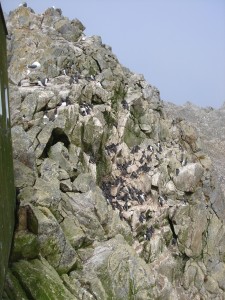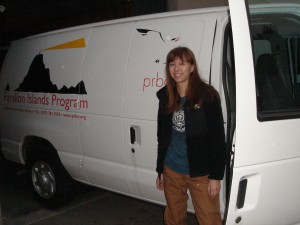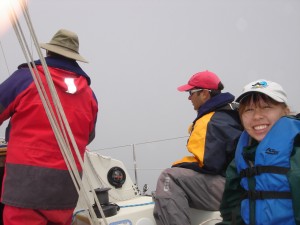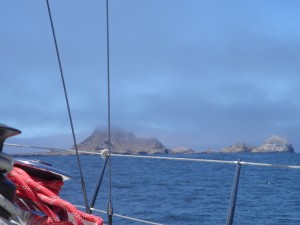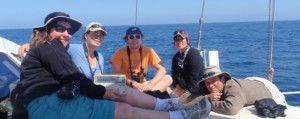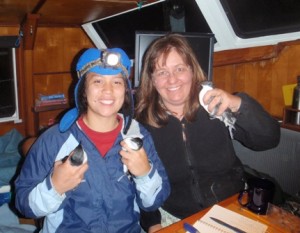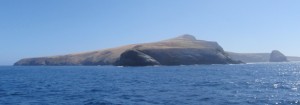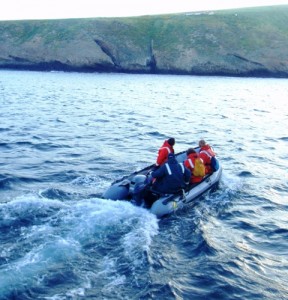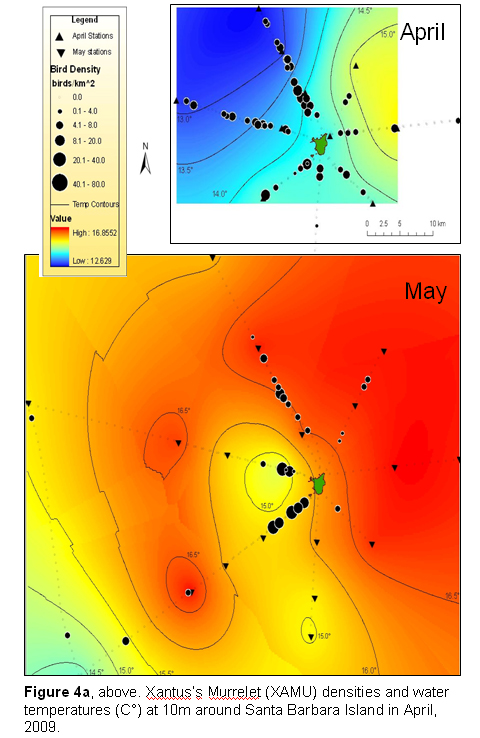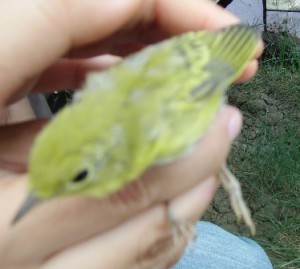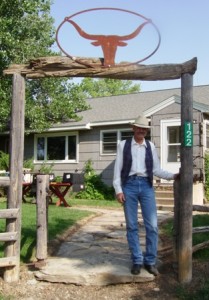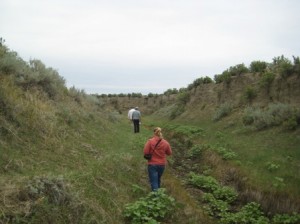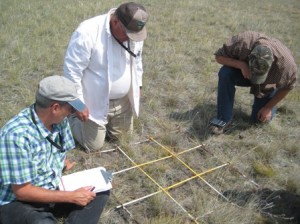Today, like every day, I did X-plot again. I took a video of the walk back from the Murre blind for y’all entertainment.
It’s too big to upload onto this blog directly, so here’s a link to it on youtube: http://www.youtube.com/watch?v=9OIL37fvZi0
It’s about 6.5 minutes long, which I know is eons in internet time, but I attempt to explain what’s going on so it might be interesting to get through the whole thing, and bear with the fumbling commentary, as I’m dodging swoops from WEGU’s the entire time I’m filming.
After lunch, Russ showed me how to do re-sighting of the elephant seals, or Mirounga (their genus name), as they are referred to in the study. I basically go to three locations where they like to hang out and look with my binoculars to see if they have any tags, then try to figure out the tag number and record it only if im 100% confident I got it right, and which fin and between which digits it has the tag, and any other details, like if there are other tags (and their corresponding details), it’s age class, sex, and if there are major scarifcations to it, and whether its alive, dead, or the tag was found separate from the seal.
After that, Russ showed me how to do site-searching for the Ashy Storm Petrels (ASSP). I carry around a boombox that plays a recording of their call, and play it on and off along the crevices where they like to hide (today I just did the stone wall that supports the trail up lighthouse hill from the bottom to the top) until I hear one call back, and then its a matter of hide-and-go-seek where I play the call and listen for it to call back and so forth until I figure out which crevice it’s hiding in, then mark the entrance with three dots of orange spray paint. Later, Jessie will go over the site(s) I found and further confirm whether or not the bird is using the site to breed.
THEN I GOT TO SHOWER!!! YAYYY!!! Right now, with 5 people on the island, we are on a 3 day rotation so 3 days of no shower, then on the 4th day shower, then another 3 days no shower, etc. There’s hot water in the house reserved for showers so I don’t have to trek next door to the Coast Guard house in all my foul weather gear like Eleanor had to last year mwahhahahaha. Still, we try to conserve water by taking “ship showers” which I do at half the time at school/home anyway.
If you have any questions regarding the video, please feel free to ask! Remember to refer to a time in the video because “what’s going on with that bird in your video?” is not going to be a very easy question to answer.
Jessie is cooking dinner and it smells DELICIOUS!
More pictures tomorrow I promise!
Love, Kristina

